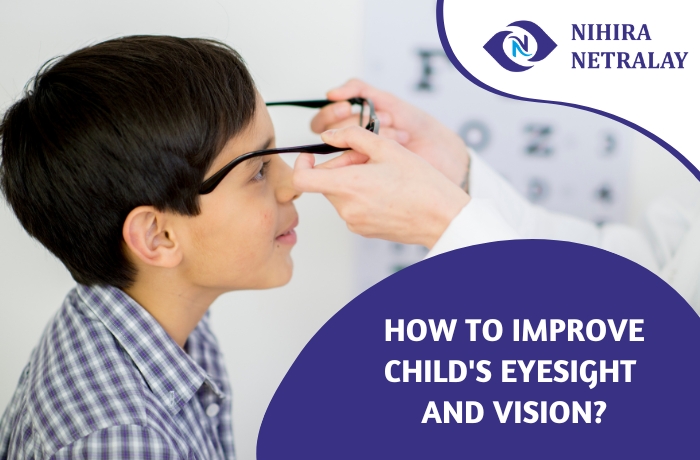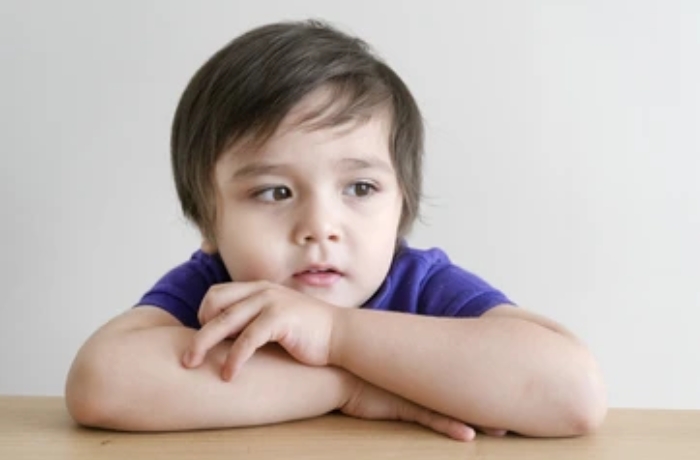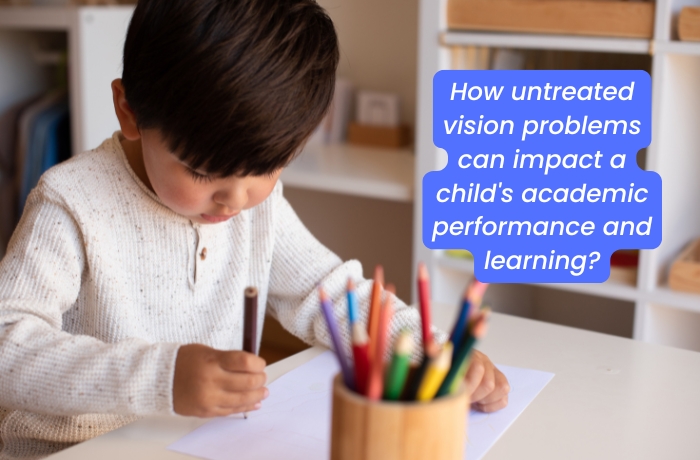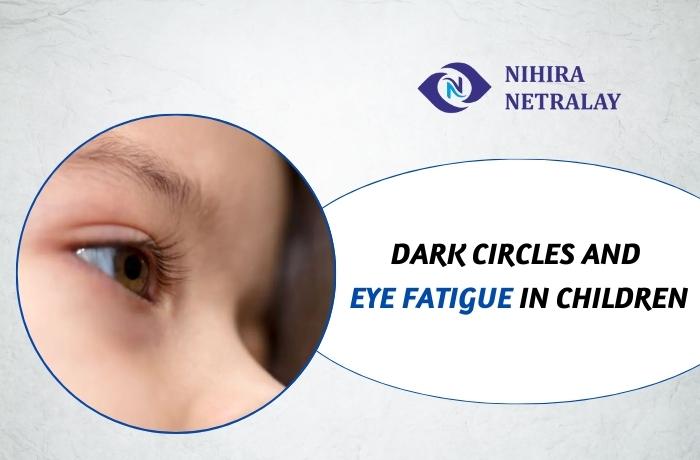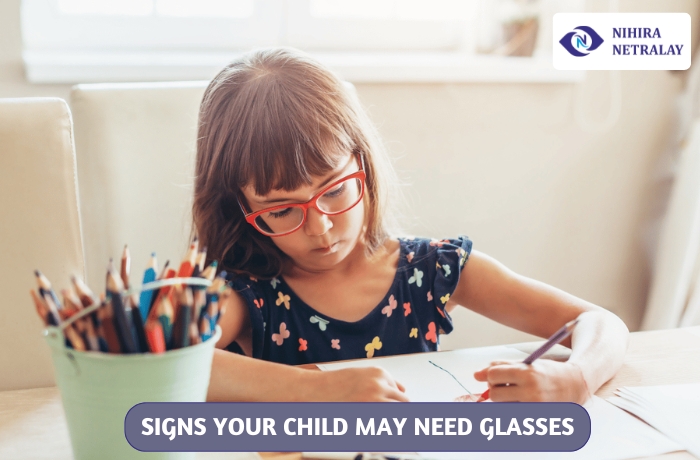As parents, we want the best for our children, including maintaining their vision. If you are wondering how you can improve your child’s eyesight and vision, you are not alone. Good eyesight is essential for your child’s daily activities, including reading, playing, and even socializing. Fortunately, there are several ways you can support your child’s vision from a young age.
1. Schedule Regular Eye Exams for Your Child
A crucial step in improving your child’s eyesight is early detection of vision issues. Just like regular check-ups for other aspects of your child’s health, eye exams should be part of their routine health care. Pediatric optometrists recommend that children have their first comprehensive eye exam at 6 months of age, followed by additional exams at age 3, and again before kindergarten or first grade. Regular exams help identify any potential issues such as nearsightedness, farsightedness, astigmatism, or more serious conditions like amblyopia (lazy eye) or strabismus (crossed eyes).
2. Encourage Healthy Diet for Better Vision
What your child eats directly impacts their eye health. A balanced diet rich in nutrients plays a key role in maintaining healthy eyesight. Foods that are particularly beneficial for vision include:
- Carrots and other orange vegetables like sweet potatoes and pumpkins: Rich in beta-carotene, which is essential for good vision.
- Leafy greens such as spinach, kale, and collard greens: These are high in lutein and zeaxanthin, antioxidants that help protect the eyes from harmful light and reduce the risk of eye diseases.
- Fish like salmon, tuna, and sardines: These are packed with omega-3 fatty acids, which can help protect the retina and support eye development.
- Eggs: Full of vitamin A and zinc, both of which are critical for eye function.
- Citrus fruits like oranges and grapefruits: Rich in vitamin C, which promotes the health of blood vessels in the eyes.
A healthy diet full of these nutrients supports retinal health, enhances vision clarity, and may prevent eye diseases down the road.
3. Limit Screen Time and Encourage Outdoor Activities
With the increased use of digital devices like tablets, smartphones, and computers, children are spending more time indoors, leading to eye strain and a higher likelihood of developing nearsightedness (myopia). To improve your child’s vision, it’s important to set boundaries on screen time. The American Academy of Pediatrics recommends limiting screen time to no more than two hours per day for children over the age of two.
Encouraging outdoor activities is equally important. Studies have shown that outdoor play can help prevent the development of myopia. The natural light exposure from being outside helps stimulate the eyes and promotes healthy eye development. Aim for at least one to two hours of outdoor activity every day. Activities like playing sports, hiking, or simply going for a walk can be great ways to keep your child engaged in nature.
4. Ensure Proper Lighting for Reading and Study
Proper lighting is essential for reducing eye strain and maintaining good eyesight. If your child is reading or studying, ensure they have adequate lighting to avoid eye fatigue. Lighting should be bright enough to avoid straining the eyes, but not so harsh that it causes discomfort. A desk lamp with an adjustable arm is ideal for creating the right lighting for reading. When your child is reading, ensure the light source is positioned behind them and directed onto the page.
Additionally, encourage your child to take breaks during long reading or screen sessions to reduce the risk of eye strain. The 20-20-20 rule is an effective strategy to follow: for every 20 minutes of screen time, encourage your child to look at something 20 feet away for at least 20 seconds. This allows the eyes to relax and reduces strain.
5. Protect Your Child’s Eyes from Harmful UV Rays
Just like skin, your child’s eyes are vulnerable to damage from the sun’s ultraviolet (UV) rays. Long-term UV exposure can lead to cataracts, macular degeneration, and other vision problems later in life. To safeguard your child’s eyesight, always have them wear UV-protective sunglasses when outdoors. Look for sunglasses that block 100% of both UVA and UVB rays. Make sure the sunglasses fit properly and are comfortable to wear.
In addition to sunglasses, hats with wide brims can provide extra protection for your child’s eyes from the sun.
6. Address Any Vision Problems Early On
If you notice signs of vision problems in your child, such as squinting, rubbing their eyes frequently, difficulty seeing the board at school, or frequent headaches, it’s important to take action immediately. Early intervention is key to treating vision impairments effectively. Conditions like amblyopia (lazy eye) or strabismus (crossed eyes) can often be corrected if caught early, reducing the risk of long-term vision problems.
If your child is already wearing glasses, make sure their prescription is up-to-date. Frequent eye exams are necessary to ensure that their vision is always optimal.
7. Correct Posture to Prevent Eye Strain
Encouraging your child to maintain proper posture while reading, writing, or using digital devices can help prevent eye strain. Ensure that your child’s eyes are at the same level as the book or screen they are looking at. This helps reduce the strain on their neck and eye muscles. Also, ensure that they are sitting at an appropriate distance from screens (about 18-24 inches) to prevent overworking their eyes.
Good posture habits are not just for preventing eye strain; they can also improve overall physical health and well-being.
8. Encourage Rest and Sleep for Healthy Eyes
Getting adequate sleep is essential for your child’s overall health, including their eye health. Lack of sleep can lead to eye strain, dryness, and discomfort. Ensure your child gets enough rest, especially on school nights. The American Academy of Sleep Medicine recommends the following sleep durations for children:
- 6-12 years: 9-12 hours of sleep
- 13-18 years: 8-10 hours of sleep
Adequate sleep allows the eyes to rest and rejuvenate, promoting healthy eyesight.
Steps to Support Your Child’s Eyesight
Ensuring your child’s vision health involves a combination of regular eye exams, a balanced diet, limiting screen time, proper lighting, and good lifestyle choices. Early intervention and ongoing care can prevent or address many eye conditions. By following these tips and encouraging healthy habits, you can significantly improve your child’s eyesight and ensure their vision stays strong as they grow. Dr. Ankita Patil is a renowned child eye specialist in Nerul, Navi Mumbai, offering expert care for children’s vision health. With extensive experience in pediatric ophthalmology, she specializes in diagnosing and treating a wide range of eye conditions in children, including lazy eye (amblyopia), strabismus (crossed eyes), myopia, and hyperopia (farsightedness)

